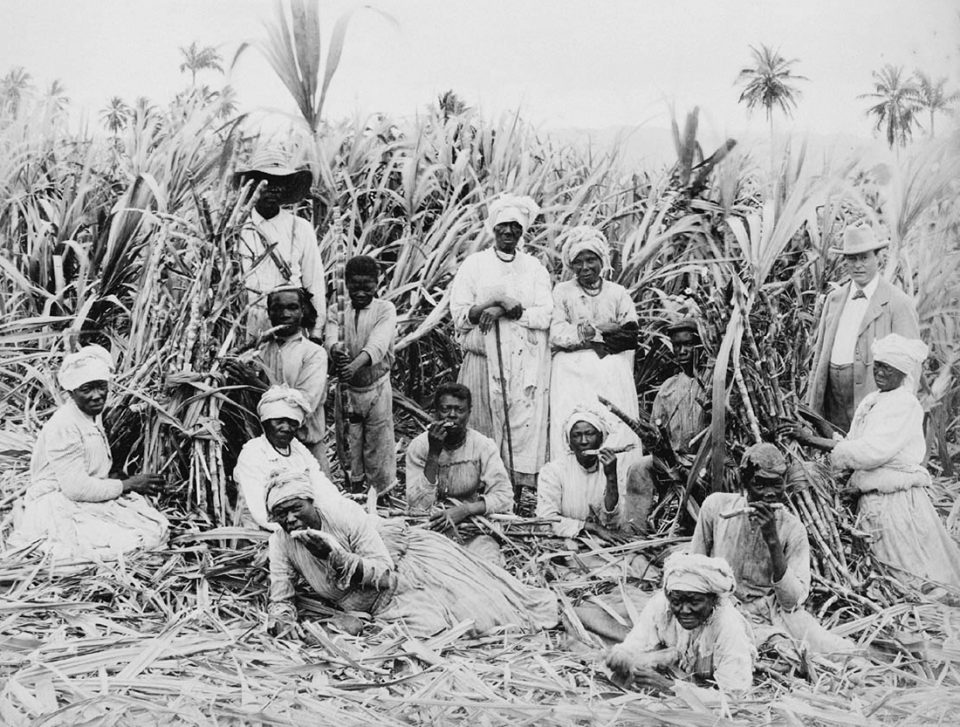Sugar Plantations and the Trans-Atlantic Slave Trade: A Dark Legacy
The sugar plantations of the Americas, spanning North America, the Caribbean, and South America, were central to the economic and social systems of the colonial era. These plantations, driven by European demand for sugar, were built and sustained by the architects of the trans-Atlantic slave trade, a brutal enterprise that forcibly transported millions of Africans to the New World. This article explores the origins, operations, and lasting impacts of these plantations, focusing on their role in shaping the slave trade and the societies that emerged from it.
The Rise of Sugar and Slavery
Sugar, a luxury commodity in Europe by the 15th century, became a global economic driver following Christopher Columbus’s introduction of sugarcane to the Caribbean in 1493. The crop thrived in the tropical climates of the Caribbean, Brazil, and North and South America, but its cultivation was labor-intensive. European colonial powers—primarily the Portuguese, Spanish, British, French, and Dutch—turned to enslaved African labor to meet the soaring demand for sugar, laying the foundation for the trans-Atlantic slave trade.
The Portuguese pioneered large-scale sugar production in Brazil during the 16th century, establishing engenhos (sugar mills) in regions like Bahia and Pernambuco. By the 17th century, the Caribbean emerged as the epicenter of sugar production, with islands like Barbados, Jamaica, and Saint-Domingue (modern Haiti) transforming into plantation economies. In North America, sugar plantations were less dominant but still significant in regions like Louisiana. South American colonies, particularly in Brazil and parts of the Guianas, also became major sugar-producing zones.















Architects of the Slave Trade
The trans-Atlantic slave trade, which operated from the 16th to the 19th centuries, was orchestrated by European colonial powers, their state-backed companies, and private merchants. Key players included:
- Portuguese and Spanish: The Portuguese dominated early sugar production in Brazil, while the Spanish established plantations in Cuba and Puerto Rico. Both relied on African slaves after the decimation of indigenous populations.
- British and French: The British turned Barbados and Jamaica into sugar powerhouses, while the French developed Saint-Domingue into the world’s most productive sugar colony by the 18th century. Both nations’ state-chartered companies, like the British Royal African Company, facilitated the slave trade.
- Dutch: The Dutch West India Company supplied slaves to their colonies, like Suriname, and other European plantations, acting as middlemen in the trade.
These powers created a triangular trade system: European goods were traded for enslaved Africans, who were shipped to the Americas to work on plantations, producing sugar, rum, and molasses for European markets. Between 1501 and 1866, an estimated 12.5 million Africans were forcibly transported, with approximately 10.7 million surviving the Middle Passage to work primarily on sugar plantations.
Plantation Life and Brutality
Sugar plantations were grueling and deadly. Enslaved Africans faced relentless labor under harsh conditions, working long hours in cane fields or boiling houses. The process of harvesting sugarcane, extracting juice, and refining it into sugar was physically taxing and dangerous. Overseers enforced productivity through violence, and enslaved people endured whippings, mutilation, and other forms of punishment.
Life expectancy on sugar plantations was low, often less than seven years, due to overwork, malnutrition, disease, and abuse. Plantation owners prioritized profit over human welfare, replacing deceased slaves with new arrivals from Africa. This cycle of exploitation was most pronounced in the Caribbean, where the death rate outpaced the birth rate, necessitating continuous slave imports.
Plantations were also rigidly hierarchical. White owners and overseers held absolute power, while enslaved Africans formed the laboring majority. In some regions, free people of color and mixed-race individuals occupied intermediate roles, but systemic racism ensured their marginalization. Resistance was common, ranging from subtle acts of sabotage to large-scale rebellions, such as the 1791 Haitian Revolution, which began on Saint-Domingue’s sugar plantations and led to Haiti’s independence.
Economic and Social Impacts
Sugar plantations generated immense wealth for European elites, fueling the growth of port cities like Lisbon, London, and Amsterdam. The profits funded industrialization, banking, and colonial expansion, while sugar became a staple in European diets. However, this wealth came at an incalculable human cost, entrenching racial hierarchies and economic disparities that persist today.
In the Americas, plantation societies were shaped by the demographics of slavery. In the Caribbean and Brazil, Africans and their descendants often outnumbered Europeans, creating vibrant but oppressed Afro-diasporic cultures. In North America, sugar plantations in Louisiana contributed to the region’s Creole identity, blending African, European, and Native American influences.
Decline and Legacy
The decline of sugar plantations began in the 19th century, driven by several factors. The abolition of the slave trade (Britain in 1807, the U.S. in 1808) and slavery itself (Britain in 1833, France in 1848, Brazil in 1888) disrupted labor supplies. Competition from beet sugar in Europe and new sugar-producing regions like India and Mauritius also reduced profitability. The Haitian Revolution, which destroyed Saint-Domingue’s plantation system, served as a powerful symbol of resistance and a warning to slaveholding powers.
The legacy of sugar plantations is profound. They entrenched systemic racism, shaping modern racial inequalities in the Americas. The cultural contributions of the African diaspora—music, religion, cuisine—emerged from the resilience of enslaved communities. Economically, former plantation regions often face persistent poverty, a consequence of centuries of extractive practices.
The sugar plantations of the Americas, built by the architects of the trans-Atlantic slave trade, were engines of wealth and suffering. They transformed global economies, enriched European empires, and devastated millions of African lives. Understanding this history is essential to grappling with the enduring impacts of slavery and colonialism in the Americas and beyond. The scars of the plantation system remain, but so does the resilience of those who survived and resisted its horrors, shaping the diverse cultures of the modern world.


